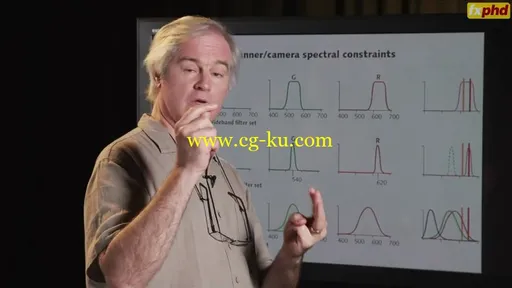
Camera Tech and Colour Science
HDRips | MP4/AVC, ~1177 kb/s | 960x540 | Duration: 07:55:52 | English: AAC, 48 kb/s (1 ch) | + PDF Guides | 4.07 GB
Genre: Color, Photo
Camera operators and assistants, colourists, visual effects supervisors and artists, and others are making the transition to digital acquisition. Digital imaging technicians (DITs), digital intermediate engineers, and technicians are also centrally involved. Leading the course is the incredibly knowledgeable Charles Poynton, who will discuss color and digital cinema acquisition in a manner that’s accessible to cinematographers, colourists, and related craftspeople.
How many stops of exposure latitude does a digital camera offer? What exposure index should be used? What is the“film look” and where should it be imposed? Why does noise arise, and what can be done to minimize it? Should I record and process “log” or “linear”? Is there one kind of “log” and one kind of “linear,” or are those terms ambiguous? Is it valuable to have an on-set display? Where do the LUTs go, and who should determine their content? Under what conditions is on-set colour grading useful?
Poyton will discuss logarithmic coding, camera sensitivity and ISO/EI ratings. He will describe the zone system, and discuss what aspects of that system are valuable in connection with digital acquisition. In addition, the course will cover the tone scale and colour modifications that impart the “film look,” and the roles of camera controls (gamma, knee, slope) and 1D and 3D lookup tables in achieving these modifications.
This course will be suitable for people involved with:
Cinematographers, assistant cinematographers, and colourists
HD engineers and Digital Imaging Technicians (DITs)
Post-production and visual effects supervisors, and post/VFX engineers
Digital cinema, digital video, and CGI/VFX software developers
The course will be technical and it will show many graphs and several equations!
Course syllabus
Class 1: Understanding the colour spectrum and the theory of how colours can be represented electronically.
Class 2: Subtractive filter mixing.
Class 3: Color transforms
Class 4: Lightness/Colour/Video terminology, code 100 issue in linear coding and different notions of LOG/LIN.
Class 5: Perceptual uniformity and Video/HDTV camera "Gamma" controls.
Class 6: Display gammas for different viewing conditions.
Class 7: Power functions of gamma and video color coding.
Class 8: Appearance effects and how to compensate for them; Wide colour gamut
Class 9: Color management, LUTs and profile building.
Class 10: The ACES workflow.

